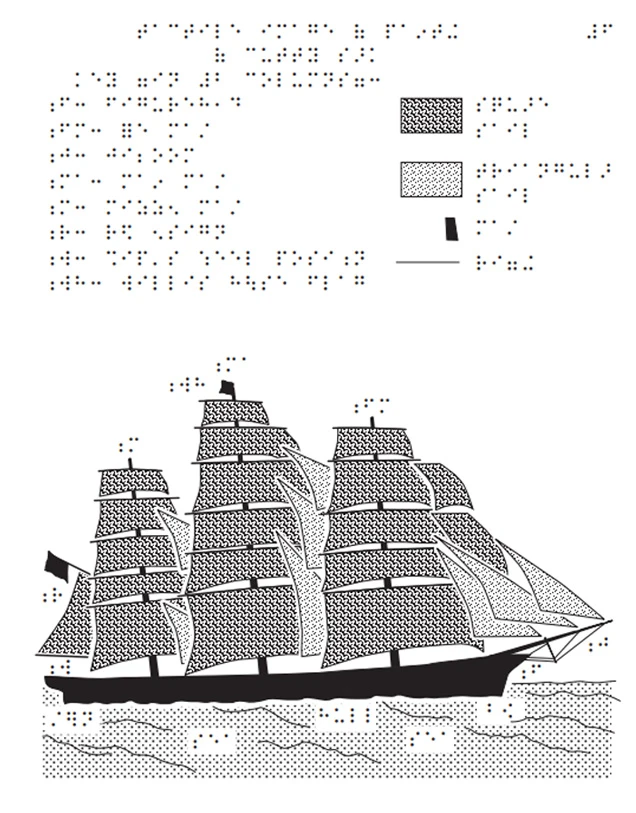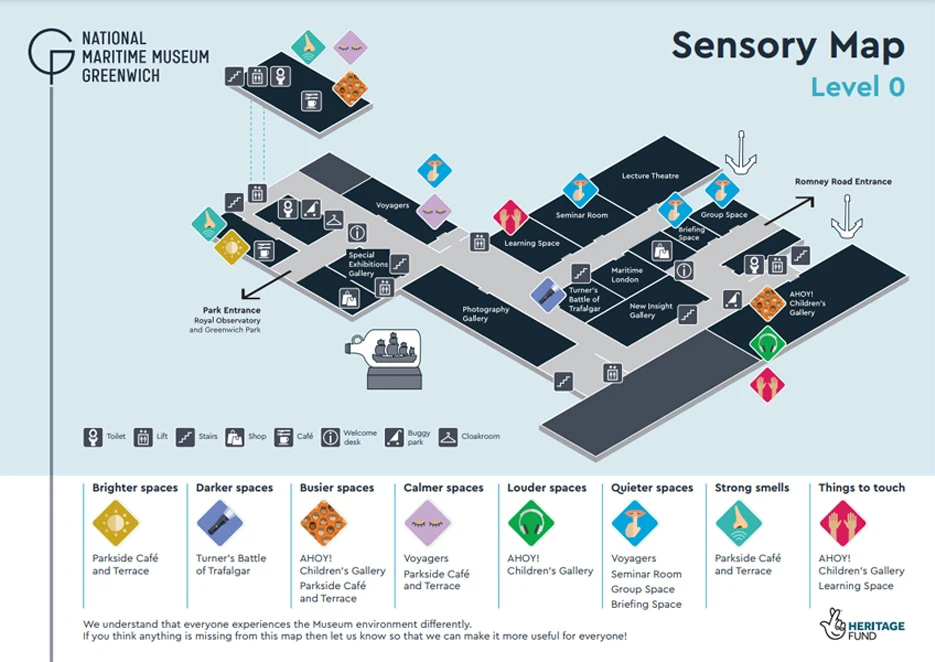Special Contribution: Inclusive, Equitable Considerations at the National Maritime Museum
Overseas Manager / Consultant Hirano BrownAs a supplement to my Column titled ‘ European Accessibility Act: Promoting Inclusive Customer Experiences ’, and based on observed initiatives during my business trips to Europe, I am contributing this article on accessibility/inclusivity.
The National Maritime Museum in Greenwich, London, a UNESCO World Heritage Site, strives to ensure good accessibility for all visitors, thereby reflecting its commitment to inclusivity and providing an enriching experience for everyone. The following overviews such inclusive, barrier free initiatives.
Physical Accessibility: The museum is wheelchair accessible with ramps and lifts available throughout the premises. Entrances and exits are designed to accommodate wheelchairs, and there are accessible toilets located at convenient points within the museum. The museum also makes wheelchairs available for borrowing.
Assistive Services: The museum provides assistive listening devices for guided tours and audio descriptions for exhibitions, making the exhibits accessible to visitors with hearing impairments. Furthermore, a number of Visitor and Sales Assistants are trained to British Sign Language Level 1 standard. All films shown in exhibitions and galleries include British Sign Language and subtitles. The Museum audio guide is also available with British Sign Language .
Visual Impairments: Visitors with visual impairments can make use of tactile models, audio guides , and large-print versions of exhibition texts. The museum’s staff are trained to assist visually impaired visitors and can provide guidance upon request. Furthermore, a braille guide to the tea ship Cutty Sark is available for download through the website.
Source: The National Maritime Museum

Sensory Considerations: The museum has taken steps to ensure a comfortable environment for visitors with sensory conditions. This includes the production of Sensory Maps designating quiet spaces, areas of bright lighting, things to touch etc.
Source: The National Maritime Museum

Furthermore, the museum also offers innovative solutions to ensure enhanced accessibility and as comfortable experiences as possible for a diverse range of visitors. Such initiatives include the “Sensory Explorer Backpack.” This inclusive backpack was developed in collaboration with families of children with educational support needs or disabilities. It allows visitors to explore the museum in a way that suits their sensory preferences, thereby enhancing experiences for both children, adults and their parents/guardians and carers. For both children and adults who desire a quieter experience, the museum loans high-quality, noise-canceling headphones, known as "Ear Defenders," with the aim of contributing to a more comfortable visit.
Moreover, to support those with Profound and Multiple Learning Disabilities (PMLD), Specific Learning Disabilities (SLD) and Sensory Processing Disorders, the museum's website also includes a number of activity guides and try-it-yourself experiments . The museum has also been designated a welcoming, safe place for people with dementia and has even produced resources for visitors with dementia. These thoughtful initiatives underscore the museum’s commitment to creating an environment where everyone, regardless of their abilities, can engage with and enjoy the rich history on display.
Information Accessibility: Information about accessibility features is readily available on the museum’s website and at the information desk upon arrival. This includes details on parking, entrance routes, and facilities.
Digital Accessibility: The museum’s website and digital resources are designed to be accessible, following best practices for web accessibility standards . This ensures that information about exhibitions, events, and educational resources is available to all visitors.
Educational Programs: The museum offers inclusive educational programs tailored to diverse learning needs, including schools and groups with special educational requirements. These programs contain a curriculum designed to engage and educate all participants regardless of ability. The museum also employs a special educational needs coordinator and staff members have had autism-related training.
Staff Training: Museum staff receive regular training on accessibility awareness and best practices for accommodating visitors with disabilities. This ensures that all visitors receive respectful and well-informed assistance during their visit.
The National Maritime Museum places accessibility at the heart of its mission to share the history and significance of maritime heritage with a broad audience. A significant portion of this commitment is realized through its website and other digital platforms, ensuring that information and resources are accessible to everyone. By continuously improving its accessibility features and support services, the museum strives to welcome all visitors and provide enriching experiences that reflect its dedication to inclusivity and universal access.
For further information on the above or more general accessibility-related enquiries, please do not hesitate to be in contact.
For more information on our services, timeframes and estimates, as well as examples of our work, please feel free to be in touch.
